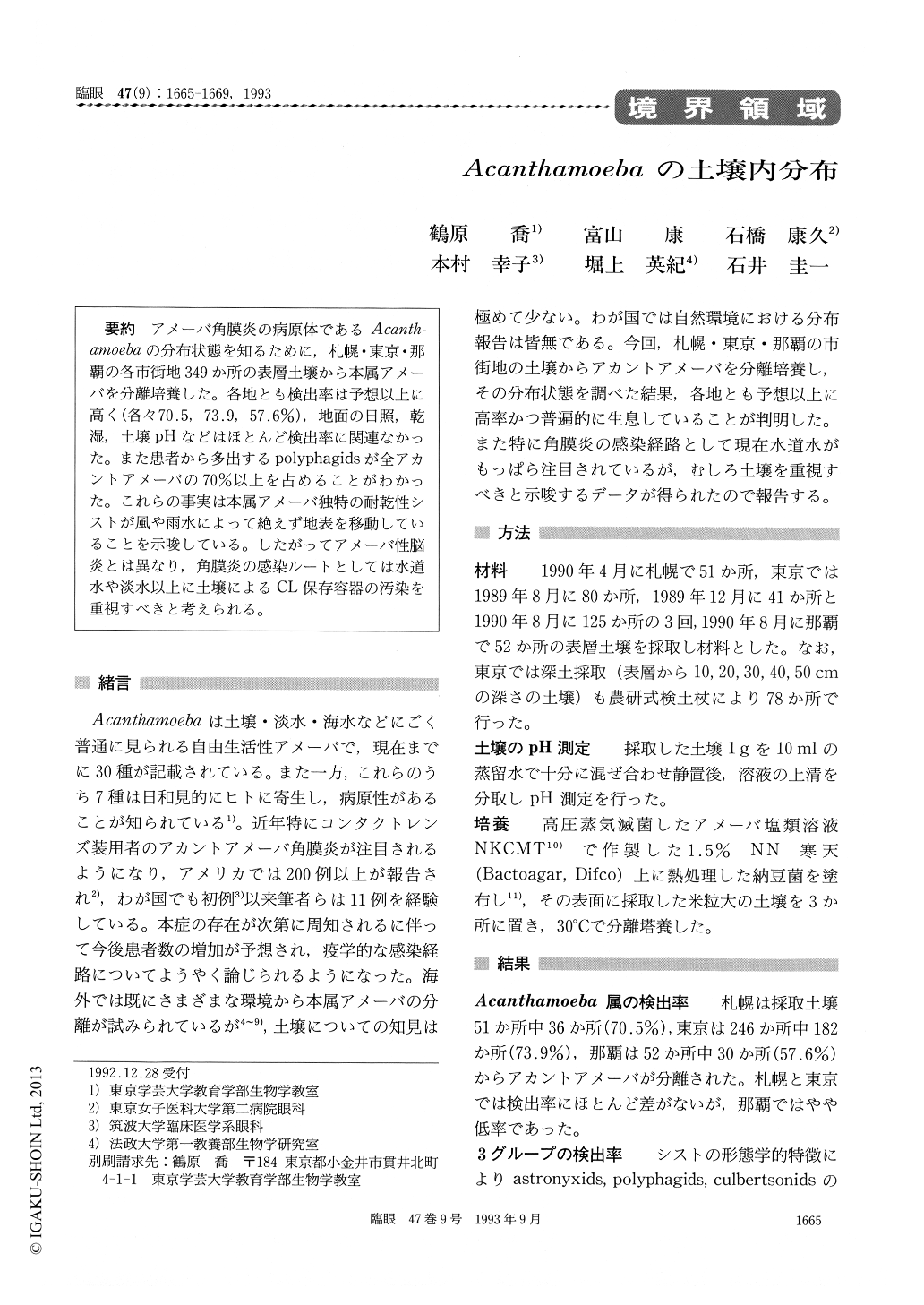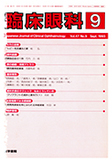Japanese
English
- 有料閲覧
- Abstract 文献概要
- 1ページ目 Look Inside
アメーバ角膜炎の病原体であるAcanth—amoebaの分布状態を知るために,札幌・東京・那覇の各市街地349か所の表層土壌から本属アメーバを分離培養した。各地とも検出率は予想以上に高く(各々70.5,73.9,57.6%),地面の日照,乾湿,土壌pHなどはほとんど検出率に関連なかった。また患者から多出するpolyphagidsが全アカントアメーバの70%以上を占めることがわかった。これらの事実は本属アメーバ独特の耐乾性シストが風や雨水によって絶えず地表を移動していることを示唆している。したがってアメーバ性脳炎とは異なり,角膜炎の感染ルートとしては水道水や淡水以上に土壌によるCL保存容器の汚染を重視すべきと考えられる。
In an effort to elucidate background features of amoeba keratitis, we isolated Acanthamoeba from 349 soil samples from Sapporo, Tokyo and Naha.The detection rate was 71%, 74% and 58% respec-tively from the 3 cities. The rate of detection was independent of sunshine, humidity or pH of the soil samples. Of the isolated Acanthamoeba, poly-phagids were the most prevalent at 70%. The find-ings suggest that Acanthamoeba cysts, which resist harsh environmental conditions, would be dis-seminated by the wind or rainwater on the ground surface. Regarding Acanthamoeba keratitis, con-tamination by soil appeared to be more important than by contaminated fluid in the container for contact lens.

Copyright © 1993, Igaku-Shoin Ltd. All rights reserved.


